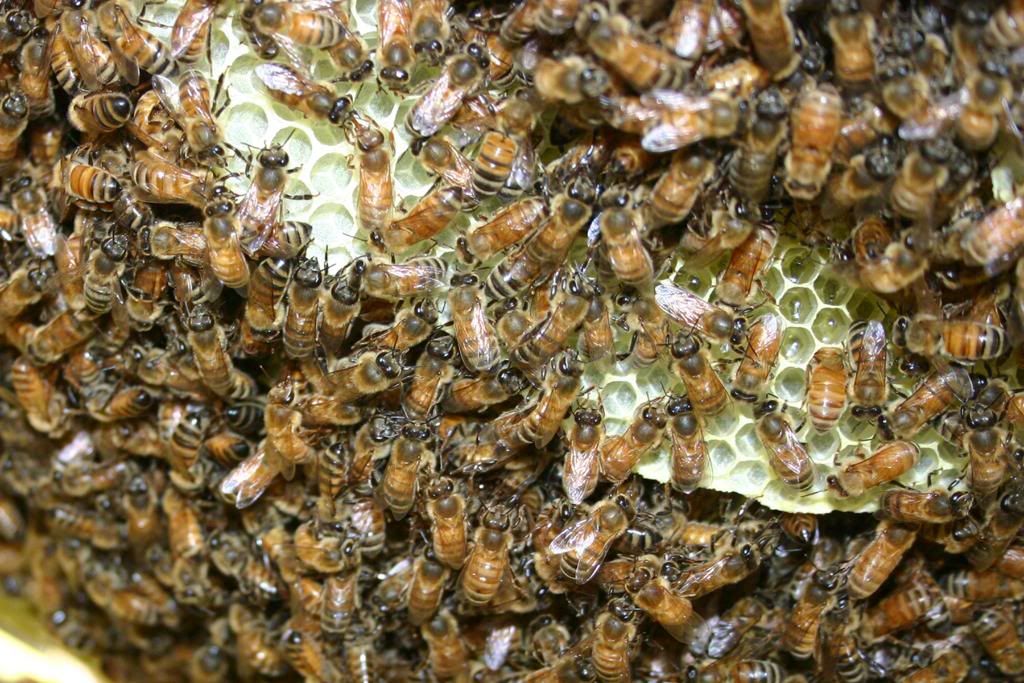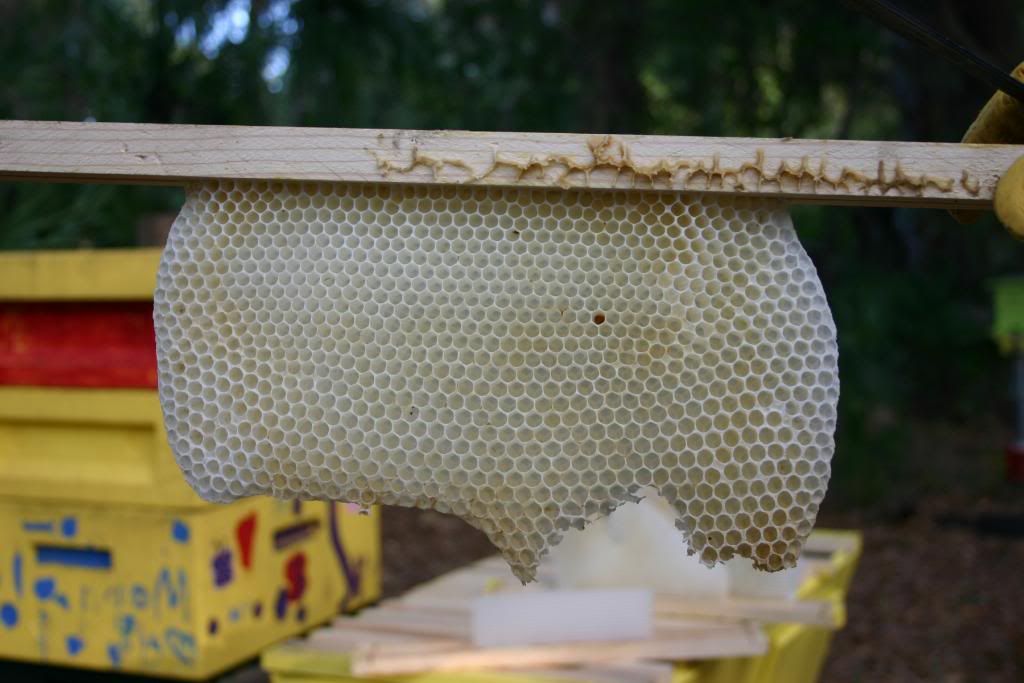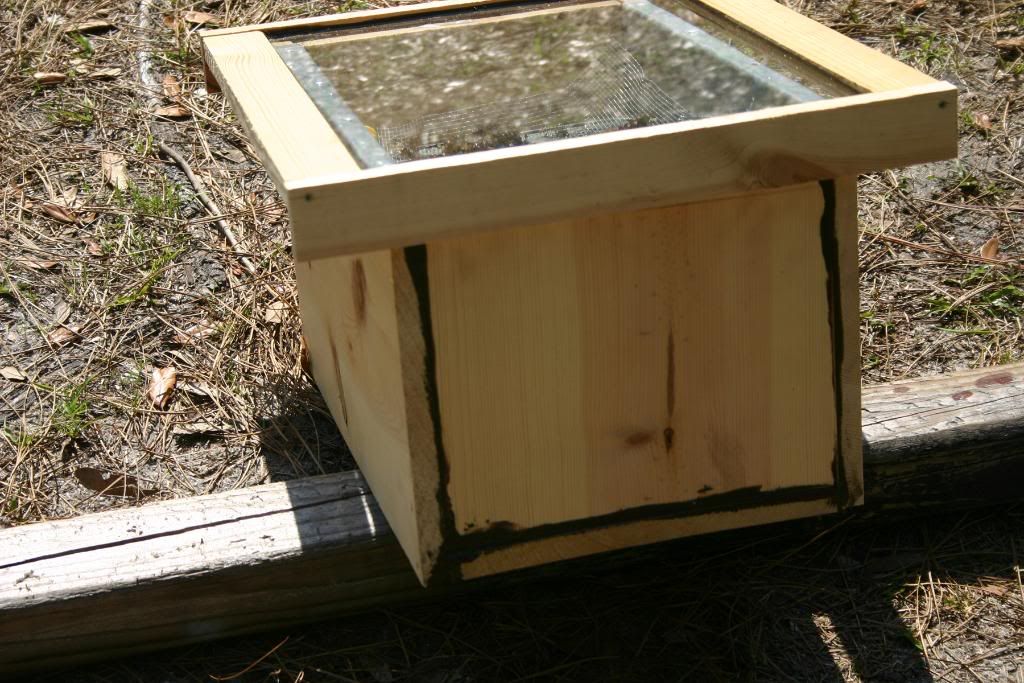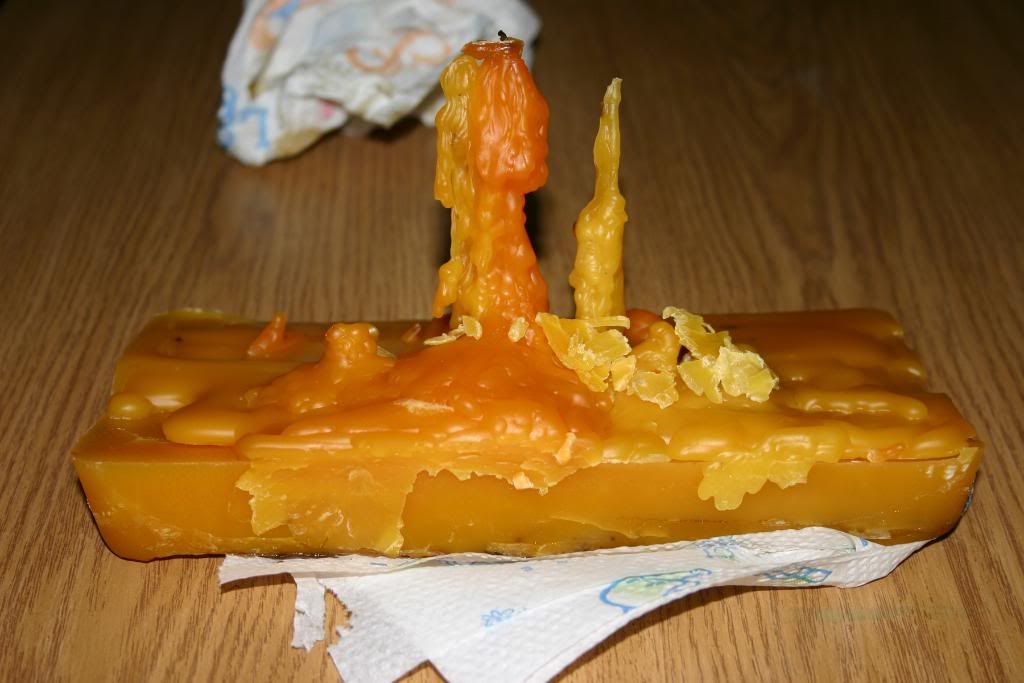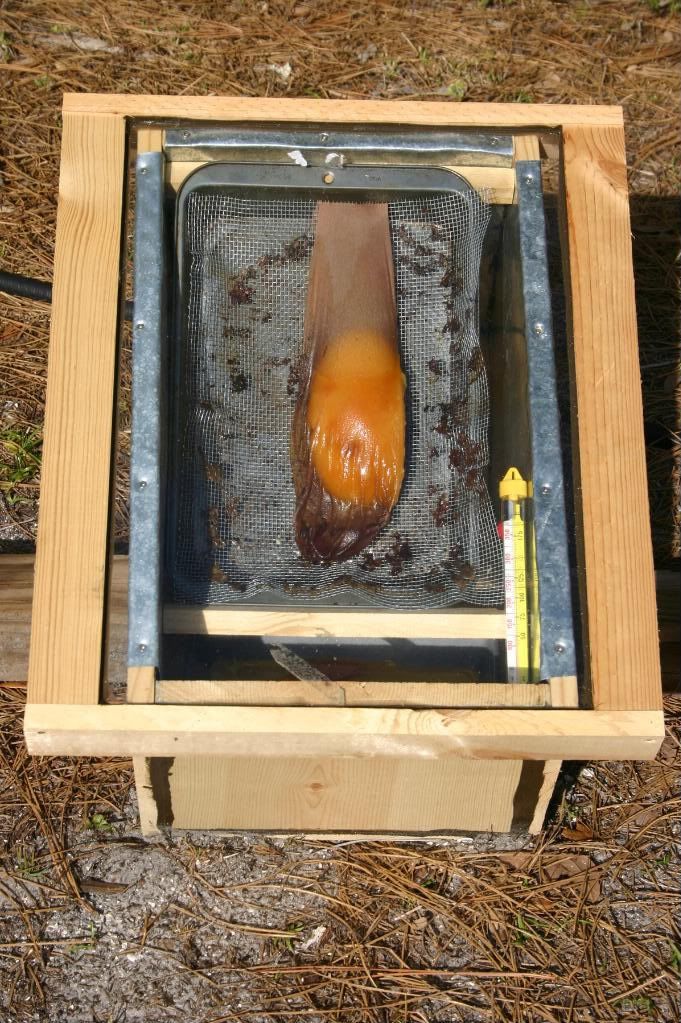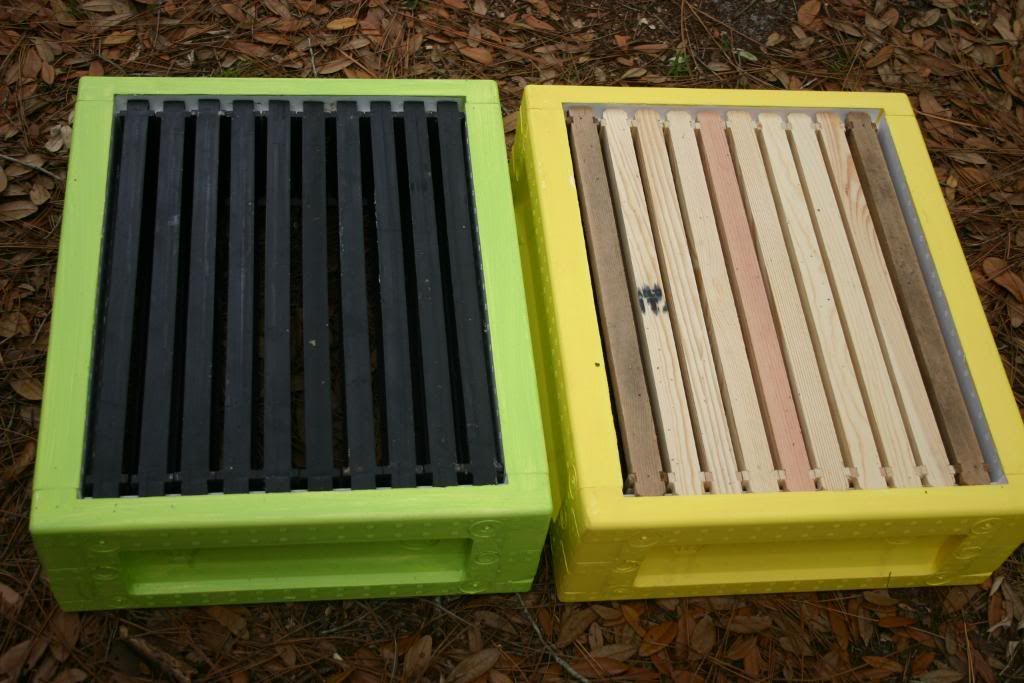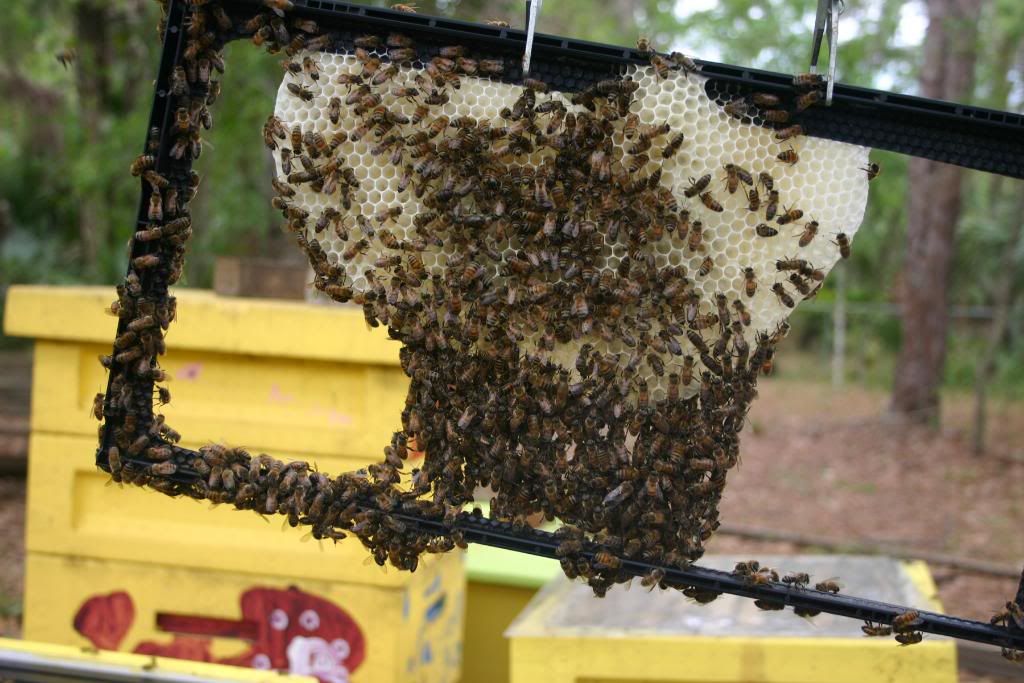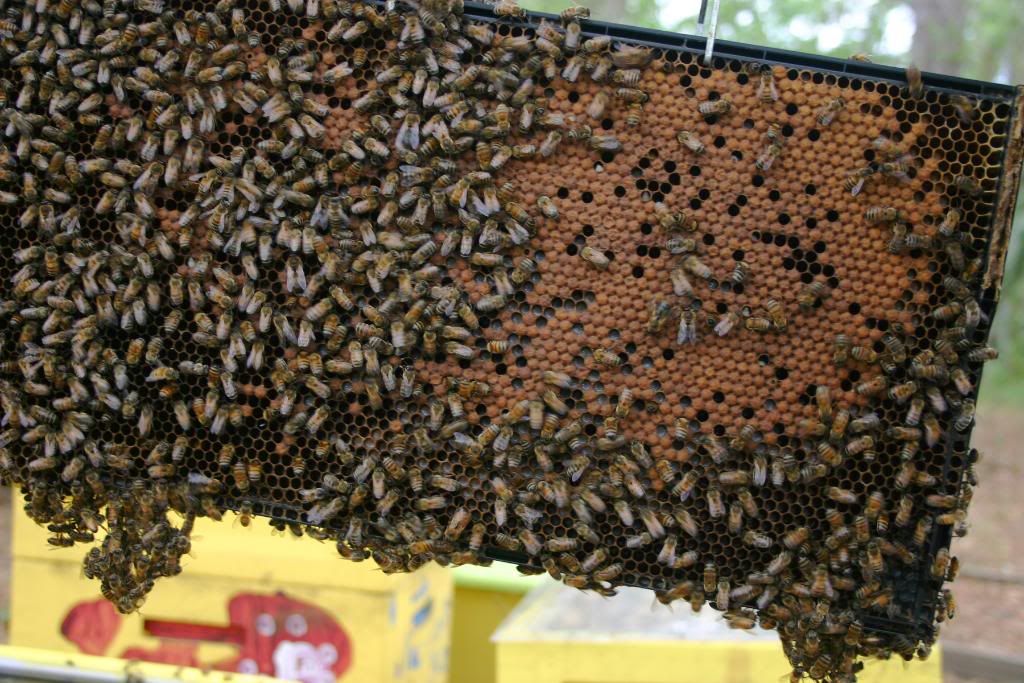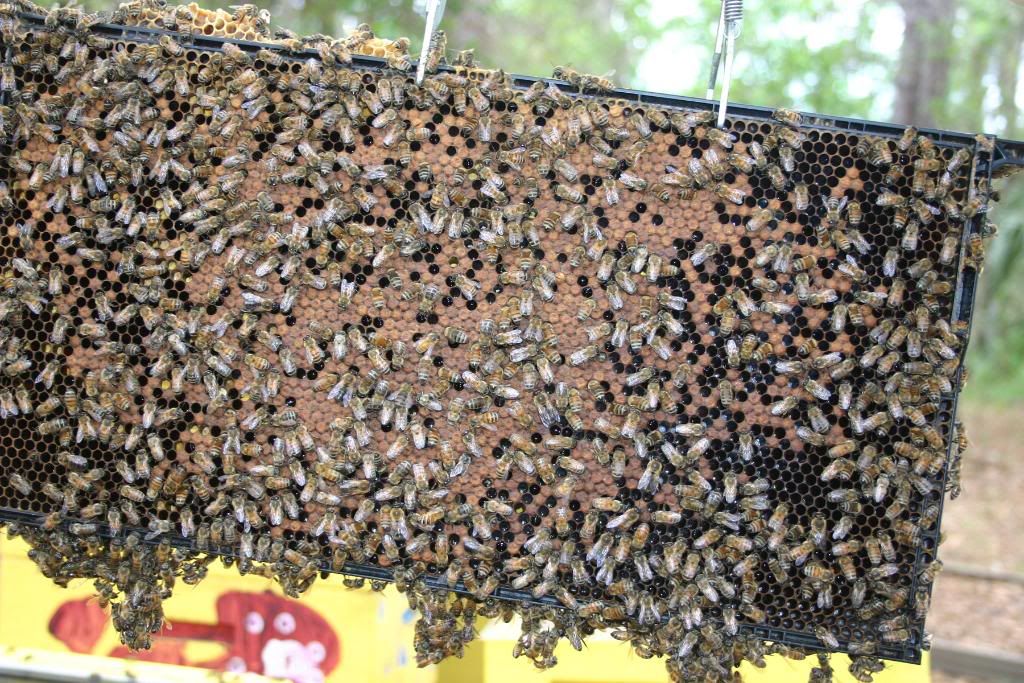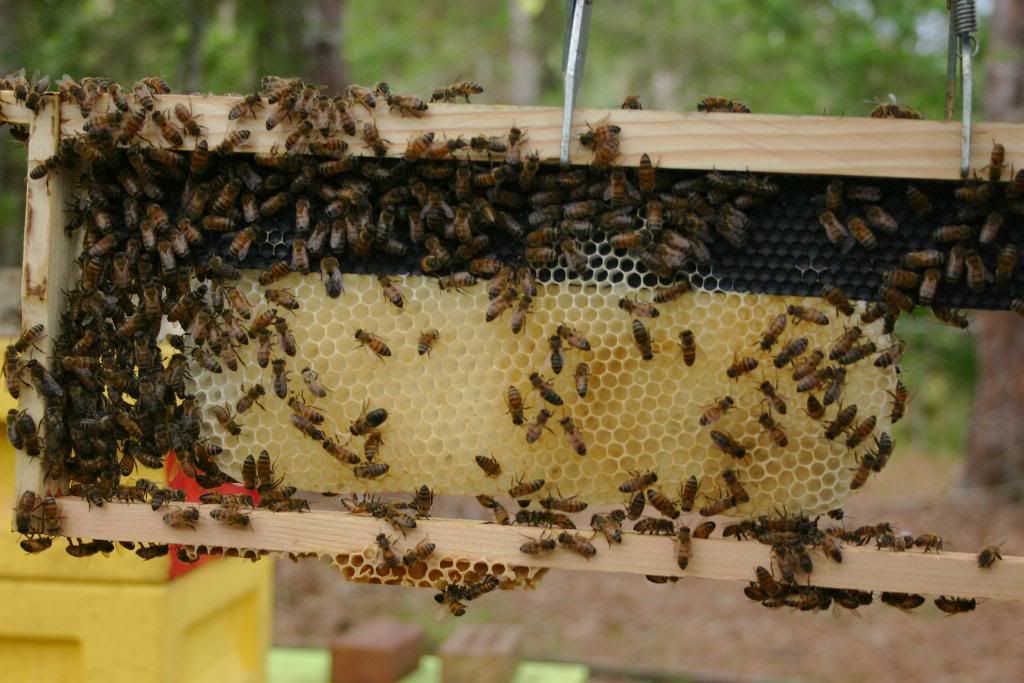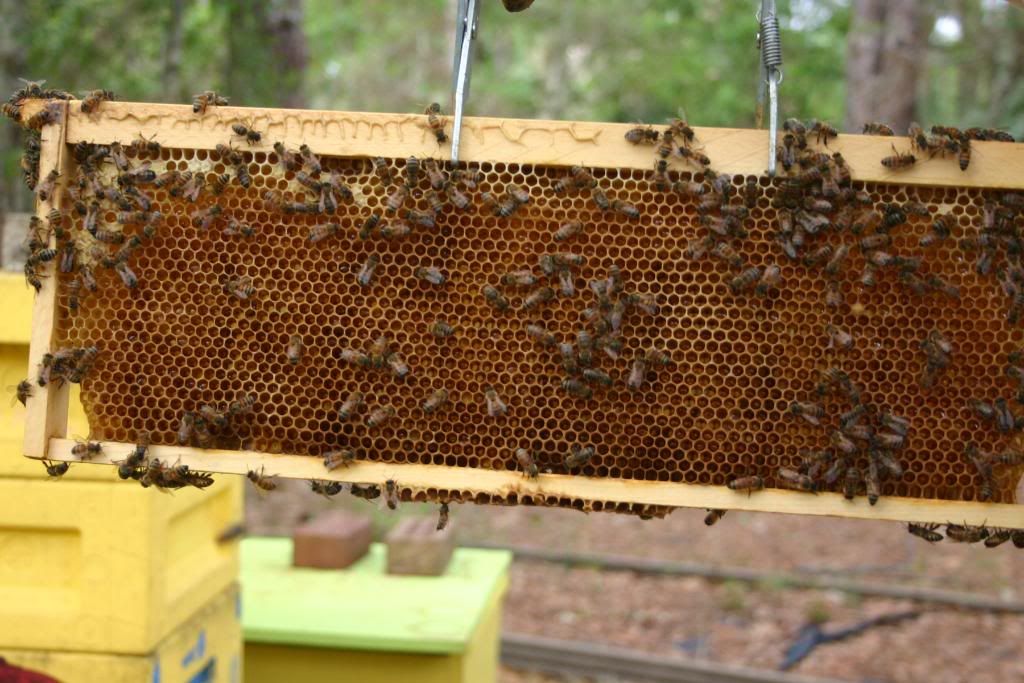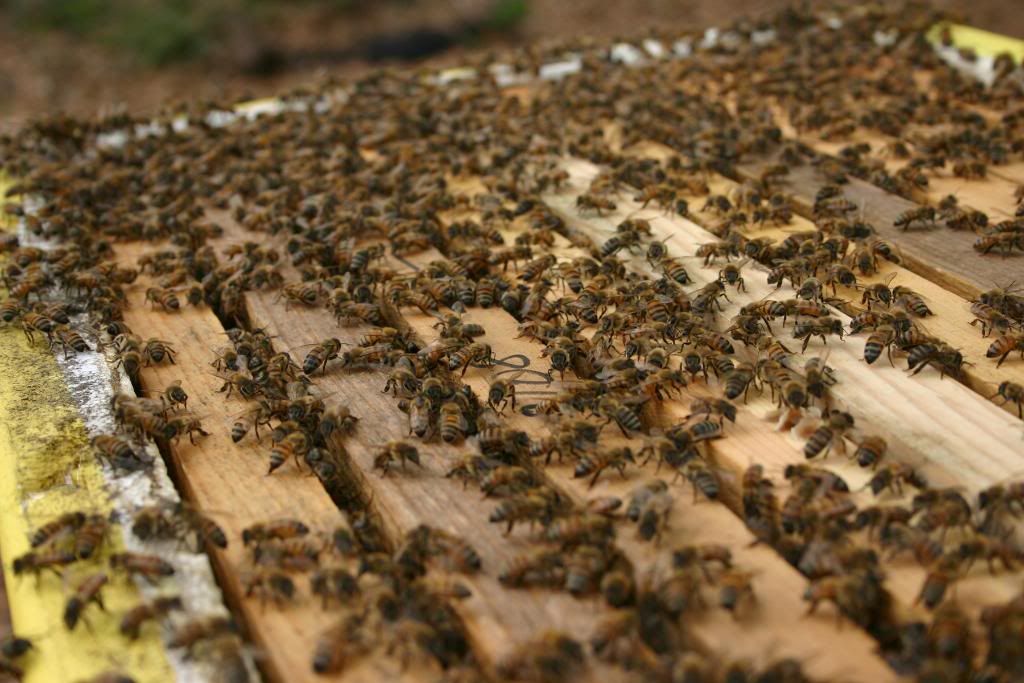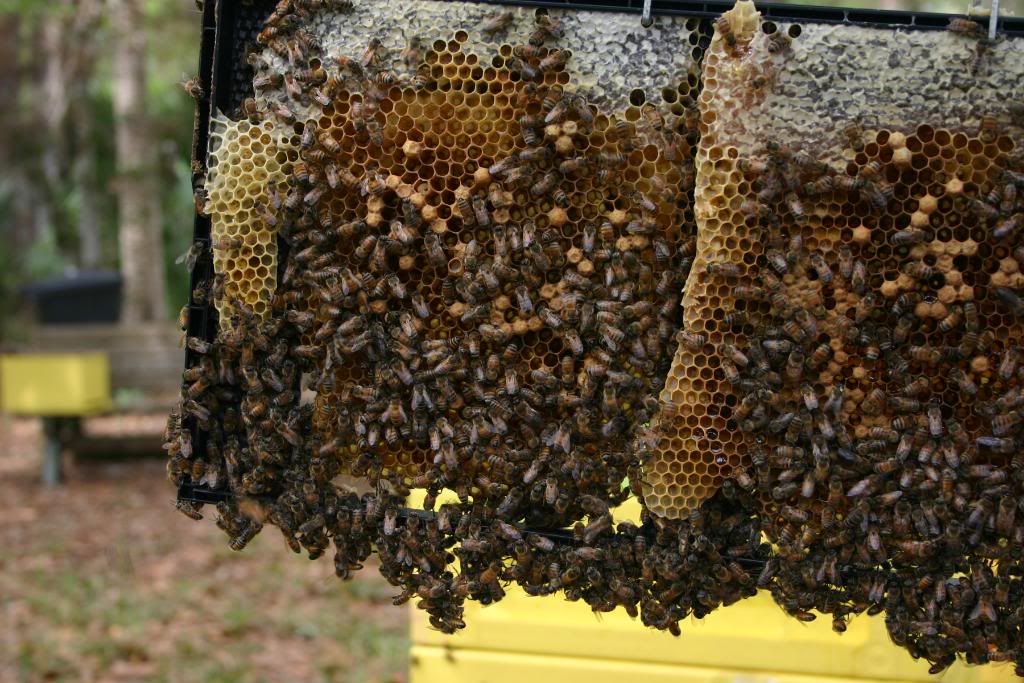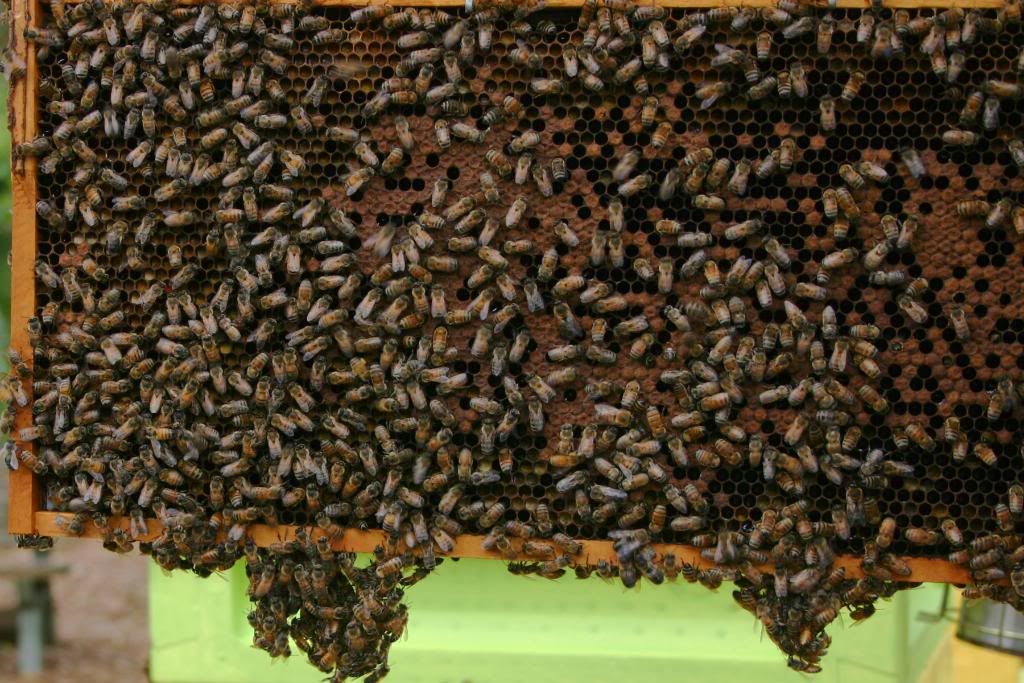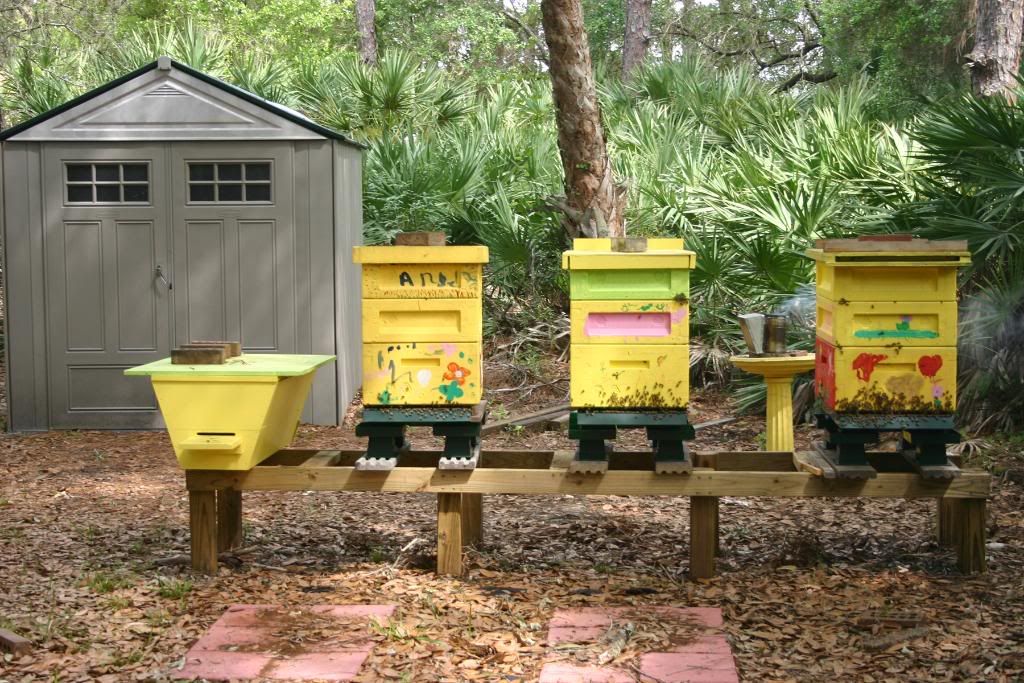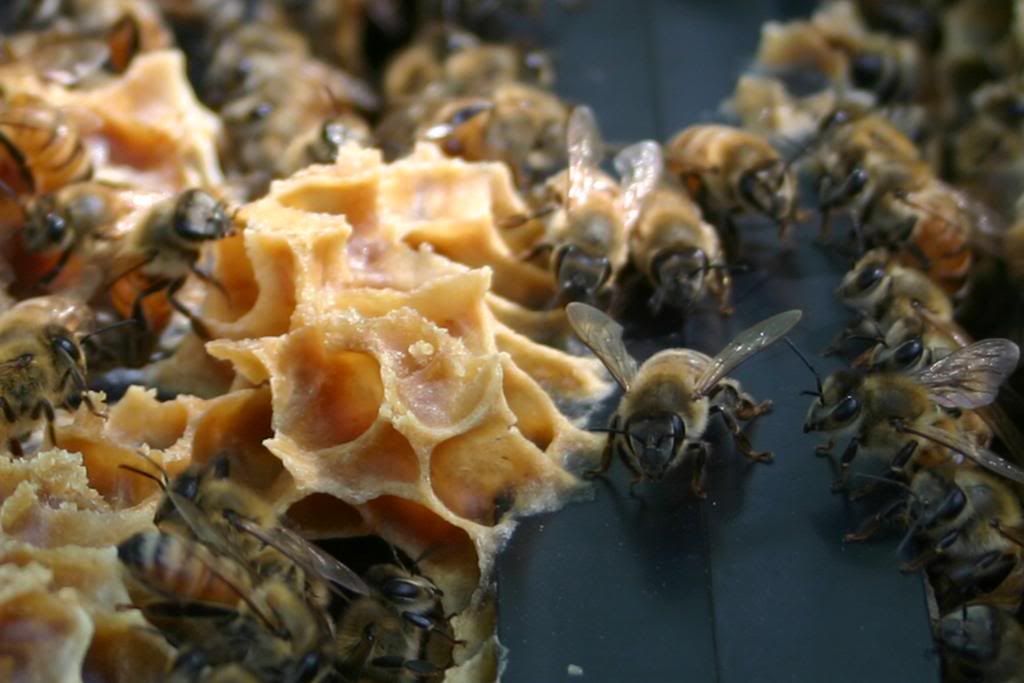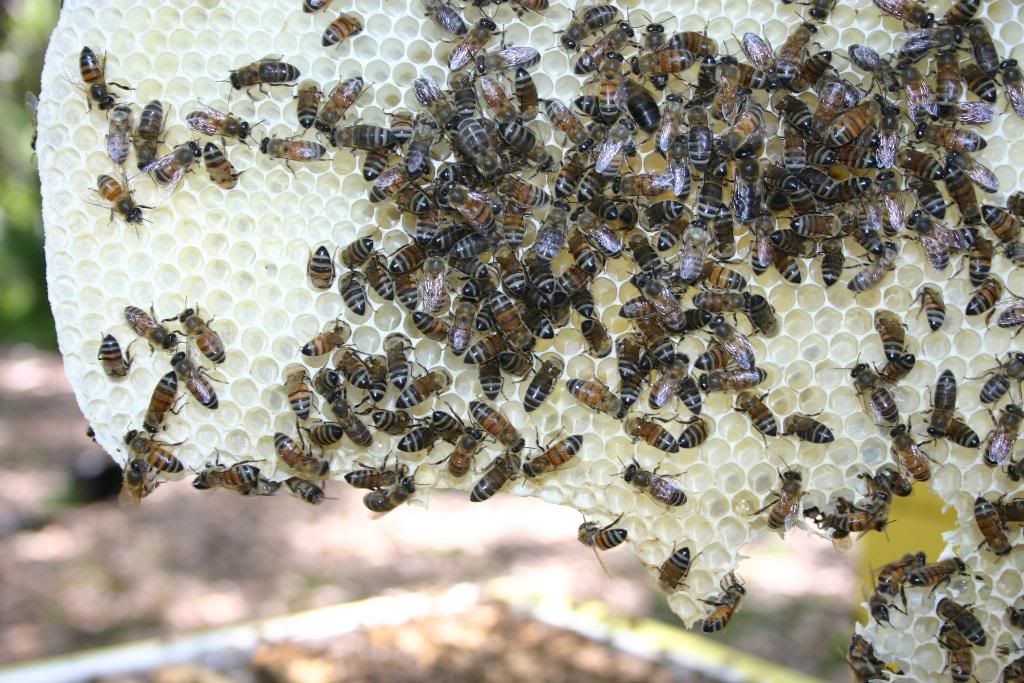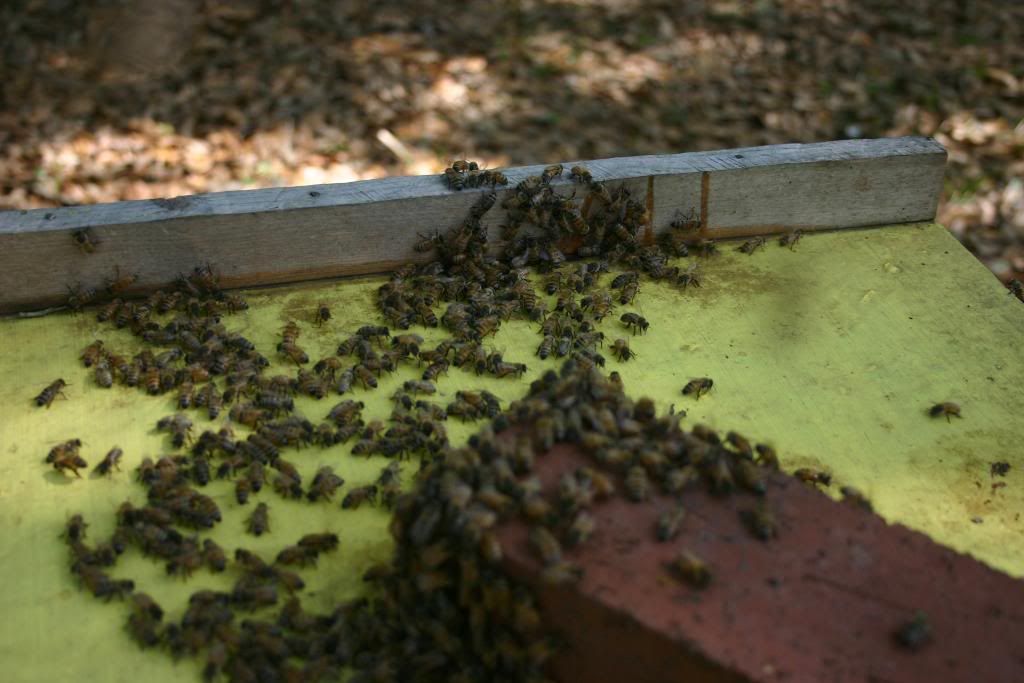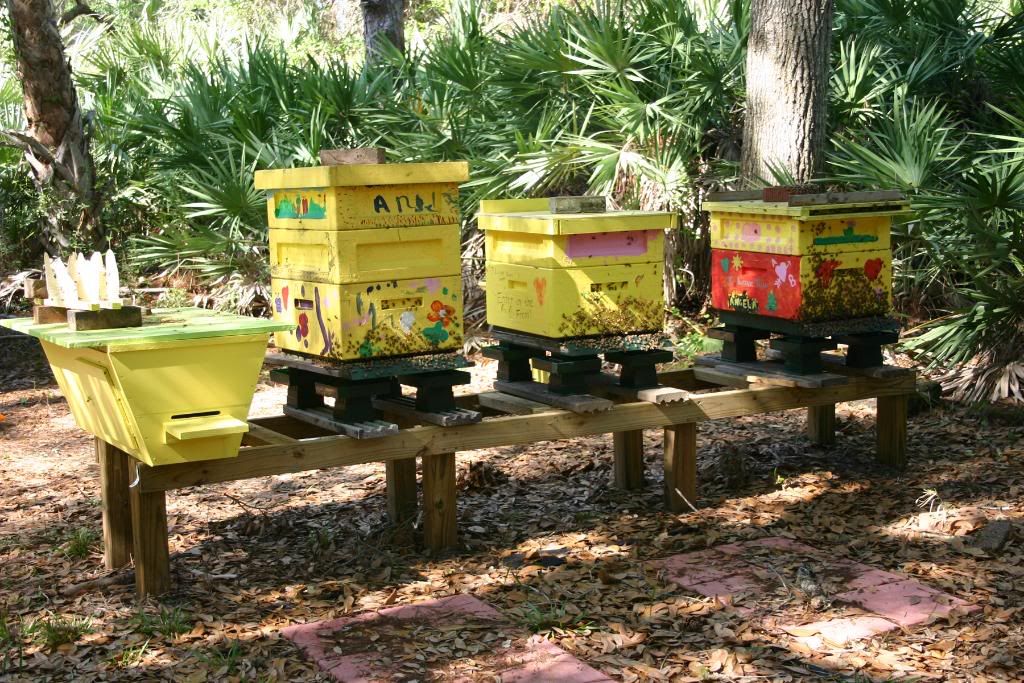It’s been a good start to the year but the honey season is far from over. Here is my bee yard, from left to right my Top Bar hive…
I’m in complete awe on the progress this colony is showing, can it have something to do with the type of beehive?? There are too many variables to really make a call. What I do know is that I provided 3 partially drawn out frames to the TBH and they have, in 2 weeks, pulled 5 more. I didn’t forget to remove the queen’s shipping cage this time, and I removed it causing minimum damage. I do need to be more careful about lifting the top off. It had glued itself to a few bars and when I lifted the top a few bars also lifted. Luckily there was no damage done to anything. Below are a couple of the new Top bars.

 Next to it is my original hive. These guys started it all. Last time I looked in here I notice a lack of stored honey. Until this weekend I was a little apprehensive. I almost pulled my back removing the bottom super. The top is about 75% full and 50% of that is capped. I hope it can wait two weeks until I return from vacation. Here is the outside frame of the top super.
Next to it is my original hive. These guys started it all. Last time I looked in here I notice a lack of stored honey. Until this weekend I was a little apprehensive. I almost pulled my back removing the bottom super. The top is about 75% full and 50% of that is capped. I hope it can wait two weeks until I return from vacation. Here is the outside frame of the top super. Next to my original hive is one of my NUCs from last year. One of the supers I robbed last week came from them. There’s not much activity going on in the current super. Palmetto and Palms flow is about to begin so maybe then it will pick up. No second super for them since they haven’t touched the one they have now.
Next to my original hive is one of my NUCs from last year. One of the supers I robbed last week came from them. There’s not much activity going on in the current super. Palmetto and Palms flow is about to begin so maybe then it will pick up. No second super for them since they haven’t touched the one they have now.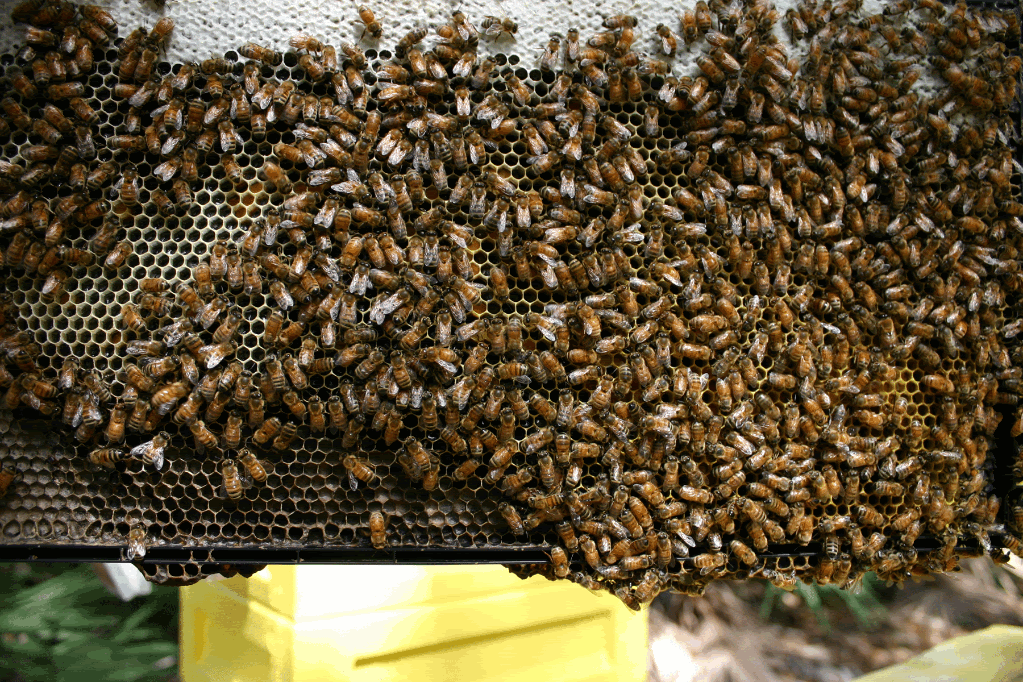
Finally my ex-angry hive with a whole new hard working pleasant attitude. No idea why they like to hang out as much as they do. The bottom super is 75% full, and the top super I placed on today. It’s one of the supers I extracted last week. Maybe this will give all the slackers hanging around some work to do. I’m hoping to have 2, maybe 3 supers to extract in a couple of weeks.














